In my last column, we touched on how spread coaches incorporated option packages in their running game in order to bring the numbers in the box into their favor while still presenting the defense with a legitimate 4 verticals threat. This week, we’ll look at how the passing game has begun to become incorporated as the 3rd option in the triple option to create the ultimate play action pass where a defense can never guess correctly. We call these combinations of run/pass concepts packaged plays.
This kind of thing has its roots back when coaches started adding receiver screens to the backside of their zone read runs. Coaches like Chip Kelly in his Oregon days would typically run outside zone, but then rather than having the quarterback run the ball and using an extra back or having a receiver motion into the backfield, Kelly started tagging the read side of the play with bubble or tunnel screens.
Play 1 – Outside Zone/Bubble Screen
You get the same effect of isolating the force defender with a 2-on-1 matchup, but you’re not asking the quarterback to become a runner unless the SS just abandons his assignment and leaves the alley wide open. Such a variation can also be used with the veer and its frontside read for a true triple option.
From there, coaches began to figure out that receiver screens aren’t the only concepts that can be tagged to a shotgun run in order to create the third option component. Indeed, coaches started using other kinds of pop screens and simple quick hitter slants and hitches to isolate selected defenders and place them into a bind that they simply can’t win.
From there, what coaches began to realize was that there were a wealth of half-field concepts available designed to stress run defenders which could be packaged with zone runs to create high percentage passes to wide open defenders or run plays with a numerical advantage for the offense, depending on how the defense responds.
One of the most versatile and dangerous types of passing concepts that can be tagged onto a zone run are triangle stretch concepts. These concepts are run out of 3×1 sets and designed to stress flat and hook zone defenders across half the width of the field while using a deep go, post, or corner route to stretch any deep zone defenders to that side vertically. Combined with a choice or slant to the single receiver side, they can be extremely difficult to defend with any kind of zone even without being tagged on to a run. One such concept that is great against split safety (Middle of field open) quarters or halves is the stick concept you’ll see below.
Play 2 – Inside Zone/Stick
Rather than reading the defensive end, the read is now the Mike Linebacker, who will be playing the hook zone in cover 4 or 3 or bailing out to the deep middle in Tampa 2. The first option is always going to be the run, so if the Mike either bails out as in Tampa 2 or slides to cover the F on the stick, the QB gives the ball during the Mesh and the RB blows by the Mike with everyone else in the box blocked.
If the Mike steps up to plug his gap, the QB pulls and now has a quick hitting passing play. In quarters, the vertical release of the X receiver and the flat release of the Y will result in both the corner and strong safety doubling the go route, with the nickel taking the flat and F coming wide open on the stick. The QB will simply need to pull, plant, and stick the throw to the inside, leaving the F plenty of room to run.
Against Tampa 2, the corner would take the flat and Mike would bail completely out to the deep middle, the corner would take the flat, and the nickel would take the hook zone, sliding over to the F. The QB would be instructed to read the Mike, and if he plays the run gap to treat the go as a glance route and hit it in the hole between the corner and the SS if it’s there. If not, the F will work open inside or outside based on how the nickel plays him and the QB will throw to the open space.
The nice thing is, even against single safety (middle of field closed) looks this is a very dangerous play as the choice route to the single receiver side is designed to basically line up your best receiver and have the QB throw him open.
Play 3 – Inside Zone/Stick MOFC
When you have an offense that runs this kind of play, there are a variety of triangle stretch passing concepts that you can use in order to achieve this same result, all depending on how the defense is choosing to fit your base zone run and what defenders you want to exploit. The important thing is to maintain both a vertical and a horizontal stretch in the route distribution with adequate spacing.
Play 4 – Snag Concept
Play 5 – Mills Concept
What’s important to note is that these plays can be run from a variety of personnel groupings and 3×1 formations, and that who is running which route can be changed up to counter defensive adjustments (i.e. the snag route can feature the outside receiver running the corner route and Y running the shallow curl).
By now, you should be able to see some of the elements of modern spread offenses beginning to come together, and be able to see how these components fit together to create insolvable problems for a defense. Now that we have established some of these base run, pass, and package concepts, we’ll start taking a look in my next column at what Kurt Roper is doing to utilize some of these elements in our offense this upcoming season, along with some of his own personal twists to take advantage of our mobility at the quarterback position.
Stay tuned and if you have questions you’d like answered in my Greaseboard mailbag columns, be sure to mosey on over to our premium, members-only BullGator Den forum.



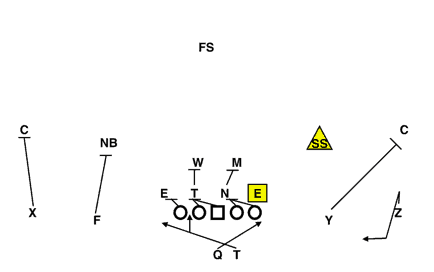
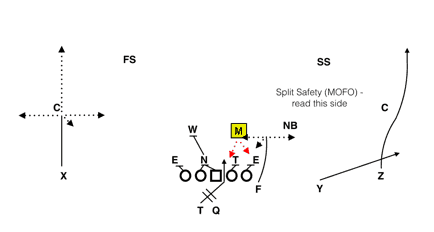
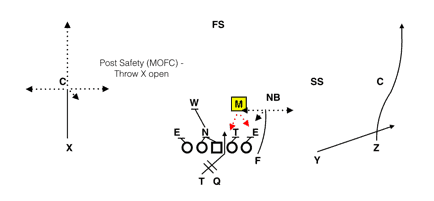
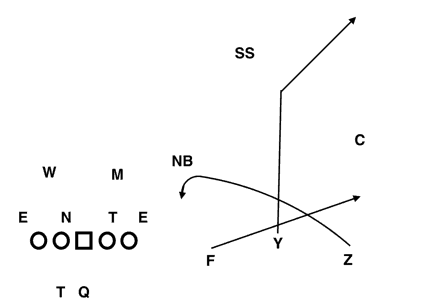
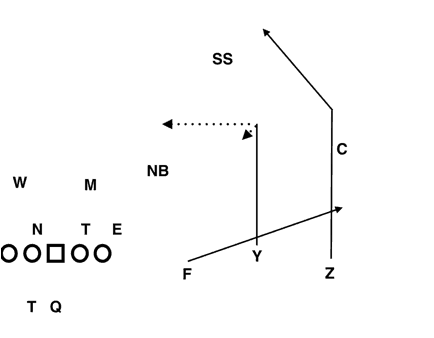
I like your analysis. I just take exception to the spread rating an”insolvable” situation for the defense. It’s like the war against germs, there is always a way found to surmount any obstacle, the same goes for a defense. If the spread was impossible to solve, everyone would be using it. The latest juggernaut is Auburn, defenses will eventually catch up to it. I would suppose that Oregon would be the example of the ultimate spread offense based on their production over the past few years, but even they struggle sometimes against defenses. Last years sixteen points against Arizona is just one example. Any offense can be “insolvable” if executed correctly. Lombardi perfected the toss sweep so well that teams couldn’t stop it even though they knew what was coming. Football is really pretty simple, if you block and tackle better than your opponent, chances are you’ll win the game..
It’s not so much that the spread itself is unsolvable. It’s that certain plays create numerical advantages that a defense cannot account for without moving someone out of position and creating a somewhat obvious area to attack due to the difficulty in disguising defenses against spread formations at the college level. It’s made worse when the offense has players isolated away from the formation that present asymmetric advantages and will win their matchup 9 out of 10 times (think Percy-type players).
Look at the stick play above. In order to cover the stick side, a defense has to either be outnumbered against the run or slide the strong safety over and accept a 1 on 1 with the offense’s best receiver to the single receiver side where the QB and receiver will simply throw opposite the corner’s leverage. And if all else fails (say if the defense just goes man and the coverage is good), the QB can take off.
There is just not a good option among those for a defense. It’s why there has been such a scoring explosion lately and the same reason the veer and flexbone create so many problems. It’s not simply a matter of blocking and tackling better than your opponent anymore, but being able to equalize numbers.